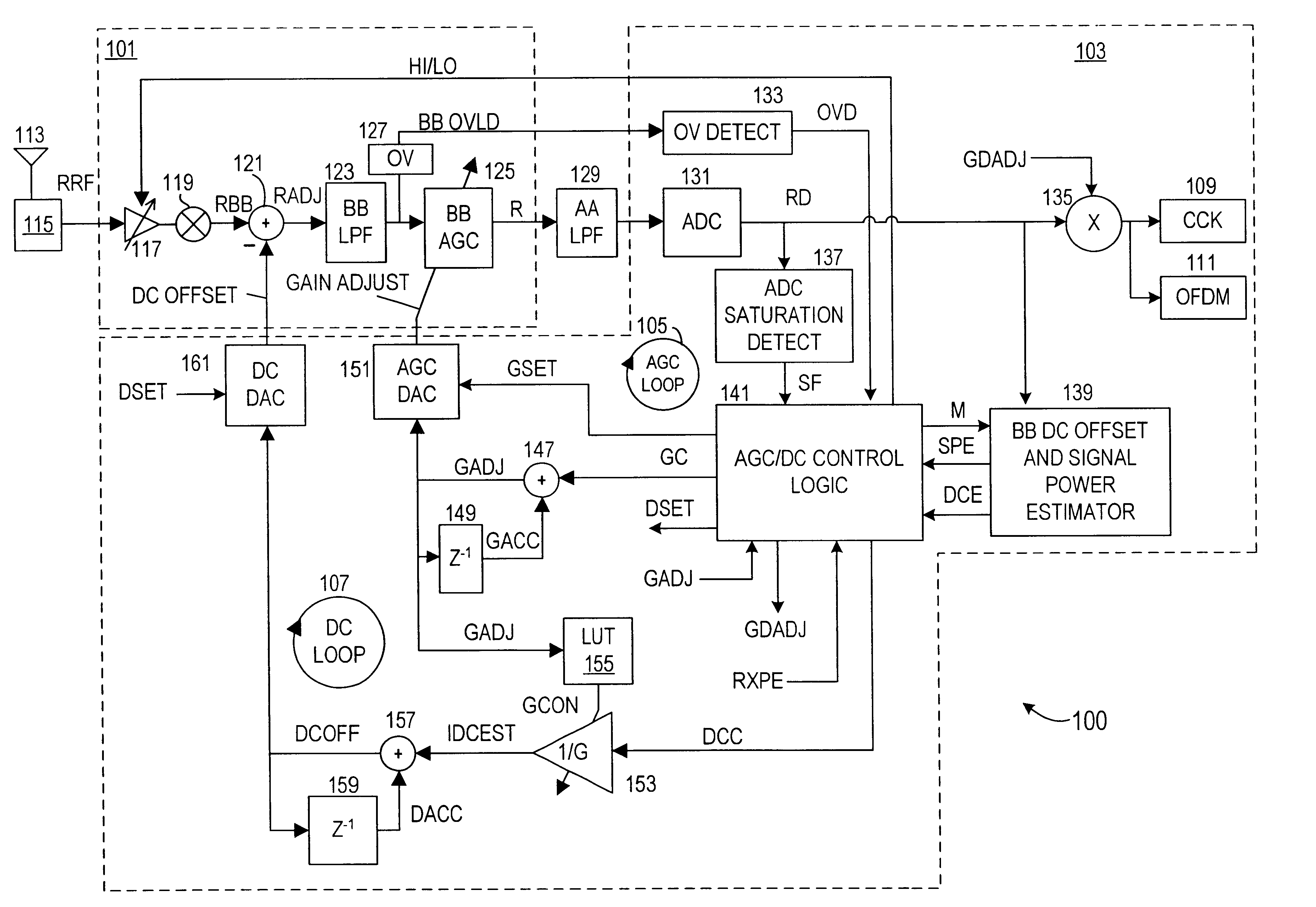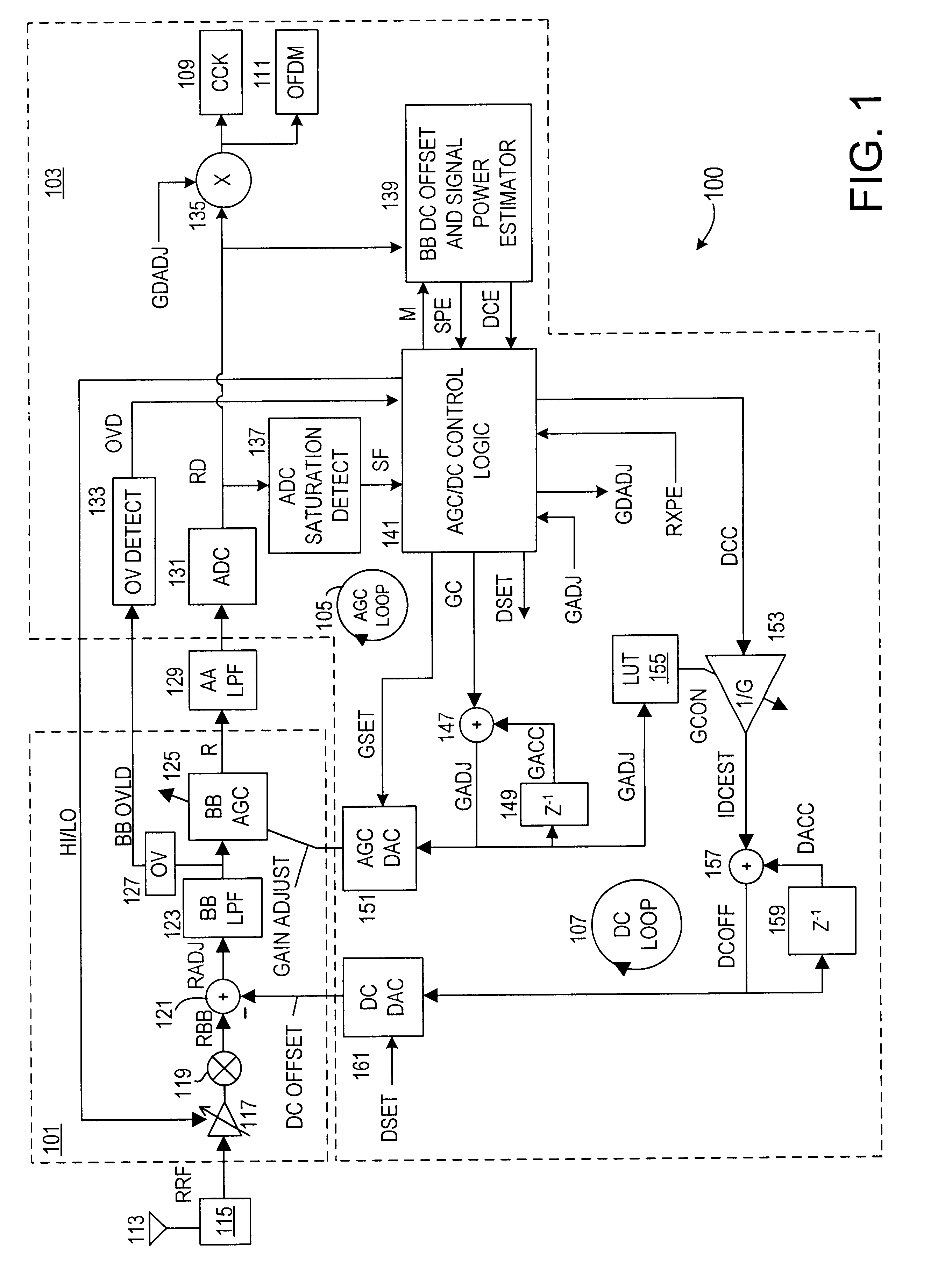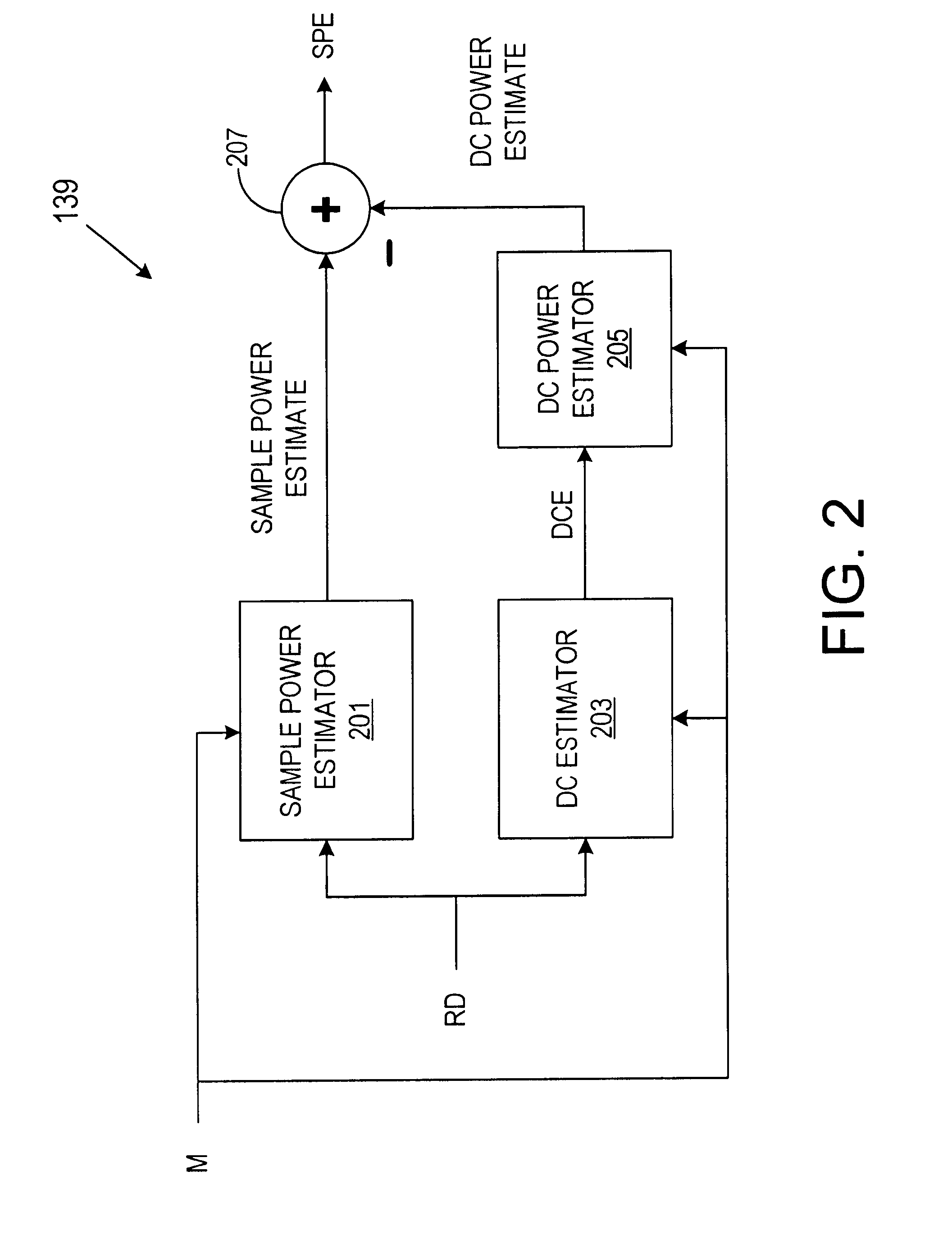Automatic gain control system and method for a ZIF architecture
a gain control system and architecture technology, applied in the direction of gain control, digital transmission, transmission, etc., can solve the problems of excessive dc components, relatively simple actions become more complicated, and the 2-5 ghz band is relatively noisy with significant interferen
- Summary
- Abstract
- Description
- Claims
- Application Information
AI Technical Summary
Problems solved by technology
Method used
Image
Examples
Embodiment Construction
FIG. 1 is a simplified schematic and block diagram of a zero intermediate frequency (ZIF) wireless receiver 100 implemented according to an embodiment of the present invention for use in a Wireless Local Area Network (WLAN). It is understood, however, that the wireless receiver 100 is not limited to WLAN configurations, but instead may be employed in other types of radio or wireless communications for other types of applications. The wireless receiver 100 is the receive portion of a wireless transceiver that includes corresponding transmitter circuitry (not shown). The wireless receiver 100 may be designed in any one of several configurations, including, for example, personal computers, laptop computers, desktop computers, etc., printing devices including any type of printer technology, personal digital assistants (PDAs) or the like, scanners, fax machines, etc. The wireless receiver 100 may be configured as a plug-in peripheral or expansion card that plugs into an appropriate slot ...
PUM
 Login to View More
Login to View More Abstract
Description
Claims
Application Information
 Login to View More
Login to View More - R&D
- Intellectual Property
- Life Sciences
- Materials
- Tech Scout
- Unparalleled Data Quality
- Higher Quality Content
- 60% Fewer Hallucinations
Browse by: Latest US Patents, China's latest patents, Technical Efficacy Thesaurus, Application Domain, Technology Topic, Popular Technical Reports.
© 2025 PatSnap. All rights reserved.Legal|Privacy policy|Modern Slavery Act Transparency Statement|Sitemap|About US| Contact US: help@patsnap.com



